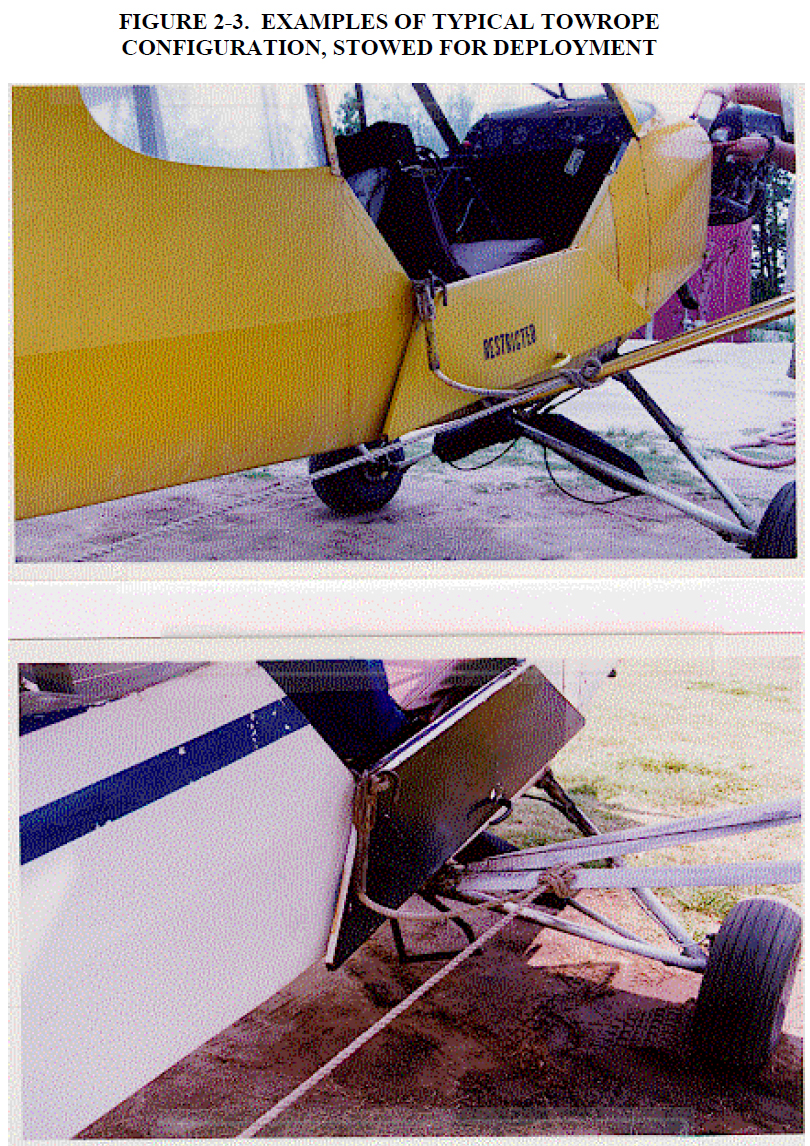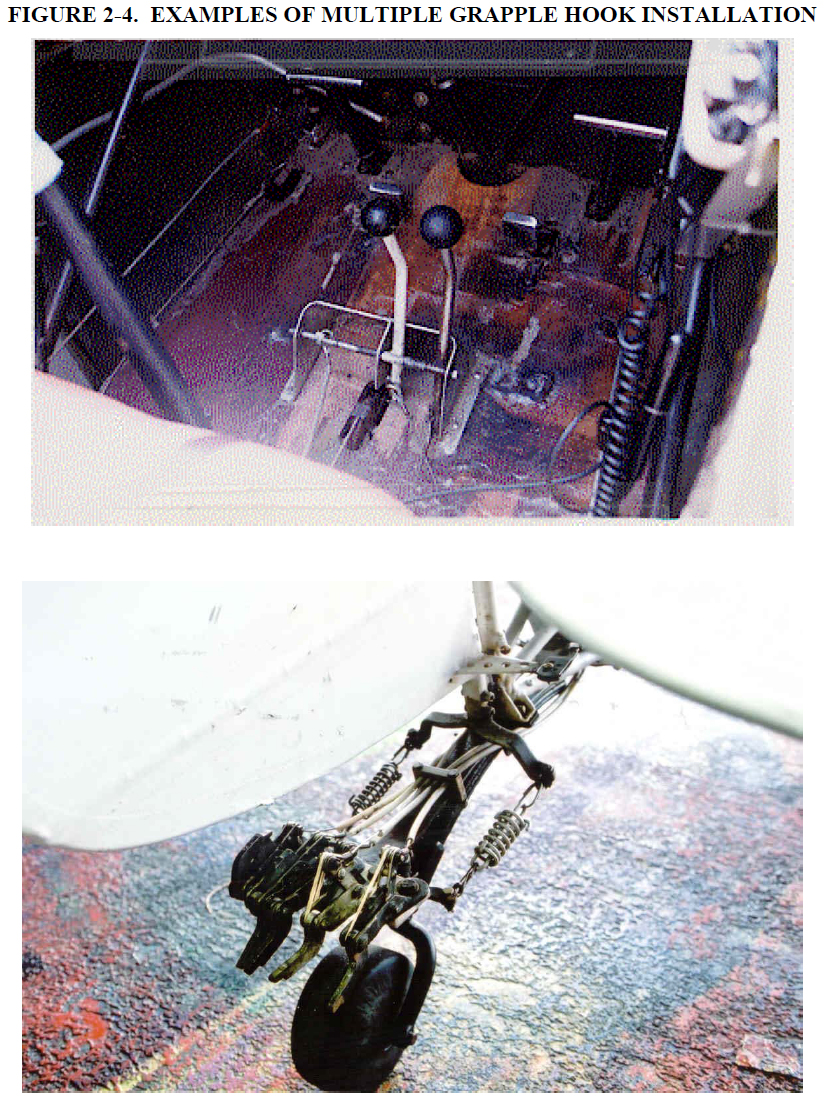
 |
|
||
CHAPTER 2. EQUIPMENT AND OPERATION SAFETY ISSUES BANNER PICKUP. The banner pickup is the most critical portion of a banner tow operation. A typical flight begins by taking off with the grapple hook assembly stowed. Upon reaching a safe altitude, the pilot will deploy the grapple hook and allow it to trail aft of the aircraft. See Figure 2-3, Examples of Typical Towrope Configuration, Stowed for Deployment.  A shallow approach is conducted perpendicular to the pickup-masts in an effort to snag the towline loop with the grapple hook. As the masts are reached, the airplane is rotated into a steep climb to assure the banner will be peeled off the ground instead of jerked off at an acute angle, depending upon aircraft performance capabilities. As the banner is peeled off the ground, back pressure is gradually reduced until the airplane is climbing at a normal angle with the banner in tow. The approach to the pickup-masts should be flown appropriate to the performance characteristics of the aircraft. Care must be taken to avoid snagging the towline with the airframe. An approach that is both too low and too slow may result in the grapple hook bouncing off the ground. The length ofthe grapple hook and line assembly should be limited to a length that will not allow the hook to strike the cockpit area of the airplane if it should come up over the fuselage. Grapples contacting a hard surface have been known to bounce upward and forward, over the airplane, snarling the horizontal stabilizer or a wing. Stalls during the banner pickup procedure constitute one of the more frequent causes of banner tow operational accidents. A stall occurs when an airfoil reaches a critical angle of attack and is a function of wing loading, independent of airspeed. In fact, an excessively abrupt rotation of an airplane during a pickup, or a snap or steep turn after a missed pickup, may be sufficient to precipitate an accelerated stall. NOTE: The formula for stall is the square root of the load factor times the normal stall speed. Gradually reducing back pressure while in the climb as the banner is picked up increases the margin from the stall threshold by decreasing the wing loading and consequently the angle of attack. FLYING WITH A BANNER IN TOW. The accidental release of a banner in flight may not be hazardous to the tow plane or crew but it may pose a threat to people and property on the surface. Banner towlines should be examined carefully for flaws before each towing day. Grapple hooks should also be examined for cleanliness and smoothness. Any surface irregularities on a hook can act as an abrasive and degrade the towline loop during the pickup as the line moves laterally over the hook while tension on the line is increased. Whenever possible, banner material and lines should be of non-conductive material. This reduces the risk of shorting out power lines in the case where a banner is released over power lines by accident. LANDING WITH BANNER IN TOW. Should a malfunction make it impossible to release the banner, it is generally uneventful if a hard surface runway is used. However, a special technique can be used if the landing is attempted on a sod or dirt runway. If the masthead and banner lay down on the sod runway, each blade of grass folds over the mast and each individual letter pole on lettered banners causes drag. The pilot needs to be aware that the masthead may dig into the soft turf like an anchor, stretching the tow line, and sometimes breaking it. If the tow line breaks, the sudden release of energy will cause the airplane to pitch down and a nose over condition may occur. This condition can be countered by maintaining back pressure on the flight controls and adding full power once the drag caused by the masthead is experienced. After the airplane is again stabilized, the power is reduced. MULTIPLE TOW HITCHES. When multiple tow hitches are used, an airplane may tow a succession of banners without having to land and reinstall a grapple line after every drop. A bank of as many as four or five tow hitches may be installed on the aircraft and a grapple line is affixed to each. These lines are stowed within reach of the pilot in the same manner as previously discussed. Care must be taken to prevent multiple lines from tangling, and since the pilot will be confronted by a multitude of grapples and hitch releases, each line and release should be positively matched to prevent confusion in the event of an emergency. The length of flights and fuel consumption should be considered in determining how many hooks will be added to a multiple tow hitch. See Figure 2-4, Examples of Multiple Grapple Hook Installation.  |
| ŠAvStop Online Magazine Contact Us Return To Books |